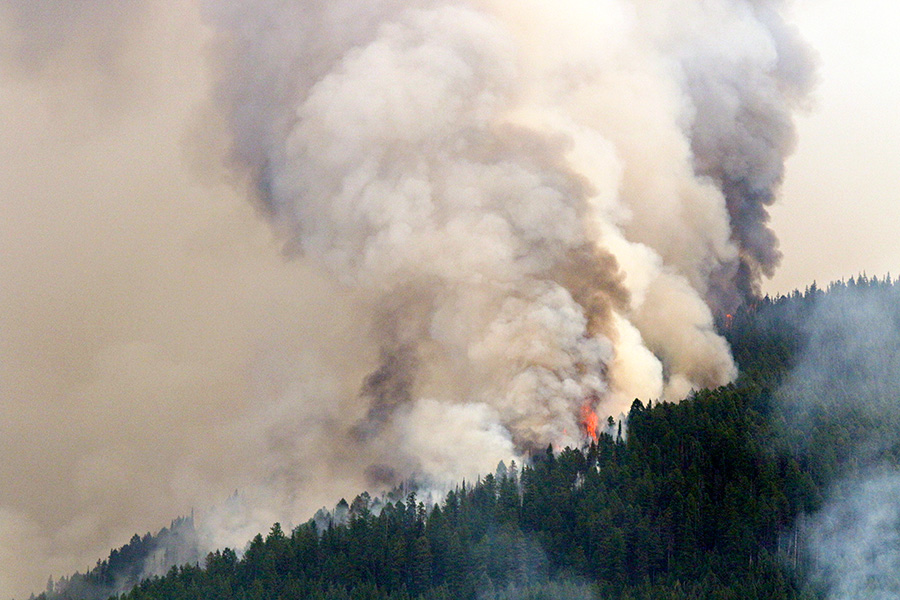While the days are getting shorter and the nights are getting cooler, local fire officials are warning the public that fire season is far from over. The warning comes as a number of large fires continue to burn across Northwest Montana.
Montana Department of Natural Resources and Conservation Fire Manager Wyatt Frampton said that despite rain late last week, Northwest Montana’s forests are still bone dry. As of last week, some large fuels — downed trees and substantial pieces of burnable material on the forest floor — had moisture levels of about 9 percent, 3 to 5 percent lower than normal.
“Given what we’re seeing out there for fuel moistures and how much fire season we have left, we’re really concerned,” Frampton said. “The potential for fires to spread remains extreme.”
Northwest Montana’s fire season traditionally lasts through September, and most large fires are not doused until a season-ending event, either a large rainstorm or snow.
DNRC Spokesperson Ali Ulwelling noted that some of Montana’s most devastating fires started in late in the season. The Great Fire of 1910 scorched 3 million acres across Washington, Idaho and Montana in late August of that year, leveling towns and killing dozens. The Half Moon Fire of 1929, which scorched 100,000 acres from Columbia Falls to Glacier National Park, started in August and was not controlled until September. And in 1984, hundreds of thousands of acres had burned across Montana during the final days of August when Gov. Ted Schwinden told the New York Times, ”Our state literally is on fire from Glacier Park in the extreme northwest corner to the Custer Forest and the Bull Mountains in the southeast.”
With history in mind, officials are warning the public to remain vigilant. Stage II fire restrictions, which prohibit campfires and the use of some internal-combustion engines during certain hours, remain in effect.
On Aug. 28, officials said that more warm and dry weather was on the horizon and that wind and thunderstorms could be on deck for the end of the week.
In Glacier National Park, the Sprague Fire had burned more than 1,500 acres east of Lake McDonald as of Aug. 27, keeping a number of area trails and campgrounds closed. The Blue Bay Fire along Flathead Lake was listed at 490 acres and was 60 percent contained on Aug. 28. And the Gibralter Ridge Fire had topped more than 5,000 acres east of Eureka.
